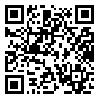BibTeX | RIS | EndNote | Medlars | ProCite | Reference Manager | RefWorks
Send citation to:
URL: http://jmed.ssu.ac.ir/article-1-546-en.html
Introduction: The effect of teaching methods on learning process of students will help teachers to improve the quality of teaching by selecting an appropriate method. This study aimed to compare the team- based learning and lecture teaching method on learning-teaching process of nursing students in surgical and internal diseases courses.
Method: This quasi-experimental study was carried on the nursing students in the School of Nursing and Midwifery in Yazd and Meybod cities. Studied sample was all of the students in the sixth term in the Faculty of Nursing in Yazd (48 persons) and the Faculty of Nursing in Meybod (28 persons). The rate of students' learning through lecture was measured using MCQ tests and teaching based on team-based learning (TBL) method was run using MCQ tests (IRAT, GRAT, Appeals and Task group). Therefore, in order to examine the students' satisfaction about the TBL method, a 5-point Likert scale (translated questionnaire) (1=completely disagree, 2= disagree, 3=not effective, 4=agree, and 5=completely agree) consisted of 22 items was utilized. The reliability and validity of this translated questionnaire was measured. The collected data were analyzed through SPSS 17.0 using descriptive and analytical statistic.
Result: The results showed that the mean scores in team-based learning were meaningful in individual assessment (17±84) and assessment group (17.2±1.17). The mean of overall scores in TBL method (17.84±0.98%) was higher compared with the lecture teaching method (16±2.31). Most of the students believed that TBL method has improved their interpersonal and group interaction skills (100%). Among them, 97.7% of students mentioned that this method (TBL) helped them to understand the course content better. The lowest levels of the satisfaction have related to the continuous learning during lifelong (51.2%).
Conclusion: The results of the present study showed that the TBL method led to improving the communication skills, understanding the concepts and facilitate the learning process among students.
Received: 2015/04/27 | Accepted: 2015/08/24 | Published: 2015/11/28
| Rights and permissions | |
 |
This work is licensed under a Creative Commons Attribution-NonCommercial 4.0 International License. |





